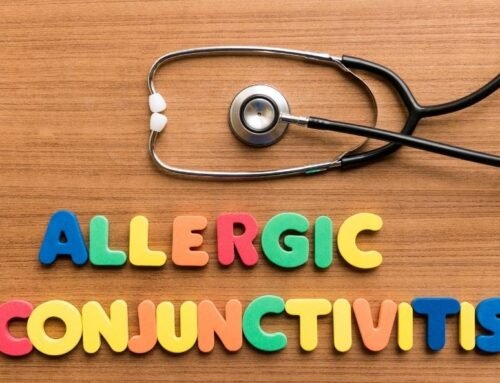Oral Allergy Syndrome is one of the partially common forms of food allergy, especially in adults. Also called Pollen-Food Allergy. People with allergy to pollen have swelling and itching in the mouth and throat shortly after some raw vegetables and fruits are eaten due to the cross relationship between allergens.
What is Oral Allergy Syndrome?
Oral allergy syndrome is a type of food allergy limited to mouth and throat. In people with allergy to pollen, swelling and itching appear in the mouth and throat 5-10 minutes after eating some raw vegetables and fruits due to the cross-relationship between pollen and allergens of some nutrients. It is also called as Pollen-Food allergy because of this relationship between pollen and nutrients.
What is the Frequency of Oral Allergy Syndrome?
Different numbers have been reported in studies related to its frequency in various communities. It has been found that 5-8% of people with allergy to pollen.
Who Can Get Oral Allergy Syndrome?
It is observed in some patients who are allergic to pollen. It occurs especially in patients who are allergic to birch, seen lesser in grass and weed pollen and in patients with allergic rhinitis (hay fever). However, sometimes nasal allergy symptoms, or people with little or no symptoms, may first experience symptoms of pollen allergy syndrome.
Which Foods Cause Oral Allergy Syndrome?
- Apple, peach, plum, pear, cherry, apricot, carrot, celery parsley, cumin, fennel, coriander, hazelnut, peanut and soybeans in those with birch tree allergies,
- In those who are allergic to grass pollen, melon, watermelon, orange, tomato and peanut causes findings.
What are the Findings of Oral Allergy Syndrome?
The findings appear shortly after the intake of the above-mentioned foods. The most common findings are itching, tingling, mild redness and swelling in the tongue, lips, palate, mouth and throat. Hoarseness can be seen. Sometimes it can be accompanied by a feeling of swelling in the throat. Most of the patients have localized findings in the mouth and throat.
Systemic findings such as nausea, vomiting, diarrhea abdominal pain, redness and itching in the hands, chest tightness and loss of consciousness may be observed in a small part of the patients, and 1-2% of them have severe systemic allergic reactions such as anaphylaxis and angioedema.
Since oral allergy syndrome is seen in people with allergic rhinitis (hay fever) with pollen allergy, at the same time in patients sneezing, itching, congestion in the nose; redness, itching and watering in the eyes; itching in the throat and ear can occur.
The findings disappear shortly after the food in the mouth is swallowed because the allergens are not resistant to stomach acid.
What are Risk Factors for Systemic Reaction?
- Allergic rhinitis
- Taking large amounts of food into an empty stomach
- Use of proton pump inhibitor drugs that reduce stomach acid
- Intake of foods such as peanuts, nuts (walnuts, hazelnuts) and peaches increase the risk of systemic reactions.
What Should You Do If Your Child Has Symptoms?
It will be appropriate to apply to a pediatric allergy specialist so that the child can be evaluated in the most appropriate way and where necessary, allergy tests can be carried out in the most correct way.
How to Prepare When Going to Doctor for Oral Allergy Syndrome?
It will be useful to bring the previous tests and the medications you are using.
Also, allergy syrups, cough syrups and cold syrups should be discontinued 1 week before coming, as they affect the allergy tests made on the skin. Breathtaking sprays and vapors, antipyretics and antibiotics containing only paracetamol do not affect the allergy test.
Your child does not need to be hungry for the test. On the contrary, it would be more beneficial to be full.
How is Oral Allergy Syndrome Diagnosed?
The diagnosis of oral allergy syndrome is made with a detailed history, systemic examination and evaluation of laboratory tests together.
Presence of pollen allergy and especially associated allergic rhinitis findings should be questioned in the patient. It should then be learned that when the foods associated with these pollen are eaten raw, the patient have oral allergy symptoms or not and whether these foods tolerated when cooked.
Allergy Tests are Very Important for Oral Allergy Syndrome
It should then be determined for both pollen allergies and for foods that are cross-linked with them by allergy tests from blood or skin. In recent years, a method called Component resolved diagnosis (CRD) method has been developed. By conducting this test, the cross relationship between allergens can be easily detected.
As a result of these tests, if there is any doubt in the diagnosis, the diagnosis should be made by performing an oral provocation test with the foods thought to cause reaction. However, due to the possibility of systemic reactions, provocation test should be done after taking the necessary precautions under the supervision of a pediatric allergist.
Food allergy tests are positive, but if there is doubt in the diagnosis, suspicious food should be excluded from the diet for 3 weeks, if findings occur when eaten again, the diagnosis is confirmed.
How to Treat Oral Allergy Syndrome?
Avoiding raw and dry forms of food responsible for most patients is sufficient for treatment. But it should be borne in mind that hazelnuts can cause a reaction even after cooking.
It is sufficient to take antihistamine drugs for mild findings that occur with food intake. However, long-term antihistamine medication is not recommended as a preservative to prevent the emergence of symptoms.
In the case of a low rate of systemic reactions, adrenaline should be administered. Adrenaline autoinjector should be prescribed for these patients to use when necessary.
Conclusions regarding the effect of immunotherapy (vaccine therapy) for pollen on oral allergy syndrome are contradictory.
There are insufficient data on the effect of immunotherapy with food (vaccine therapy) on oral allergy syndrome.
There is also insufficient data on the effect of using the drug called Anti-IgE (oma) for allergic rhinitis on oral allergy syndrome.
Does It Last a Lifetime?
Although there is insufficient information on this subject, limited data generally show that it continues for life.
As a result;
- Oral allergy syndrome is a type of food allergy limited to mouth and throat.
- In people with allergy to pollen, swelling and itching appear in the mouth and throat 5-10 minutes after eating some raw vegetables and fruits due to the cross-relationship between pollen and allergens of some nutrients.
- It has been found in 5-8% of people with allergy to pollen.
- In those with birch allergies, apple, peach, plum, pear, cherry, apricot, carrot, celery parsley, cumin, fennel, coriander, hazelnut, peanut and soybeans; for those who are allergic to grass pollen, melon, watermelon, orange, tomato and peanut causes findings.
- Findings are itching, tingling, mild redness and swelling in the tongue, lips, palate, mouth and throat.
- The diagnosis of oral allergy syndrome is made with a detailed history, systemic examination and evaluation of laboratory tests together.
- Allergens that cause oral allergy syndrome are detected by allergy tests from blood and skin.
- Some patients require a food provocation test to detect the responsible allergen.
- Responsible foods should be avoided in the treatment.
- Antihistamine drugs should be used in mild reactions and adrenaline should be used in severe reactions.
- In cases of severe reaction, an adrenaline auto-injector should be kept and, if necessary, should be done immediately as a life-saving.






